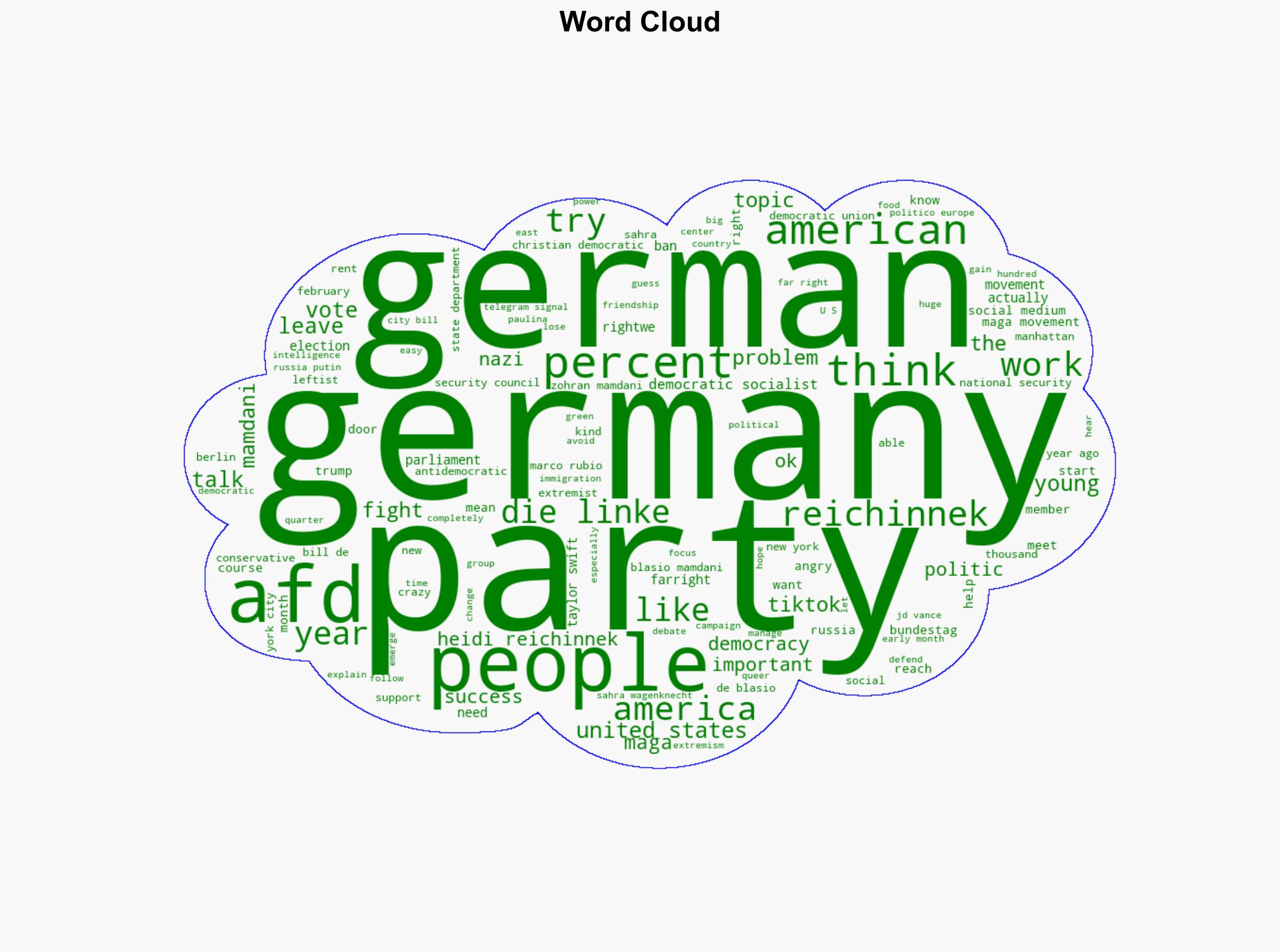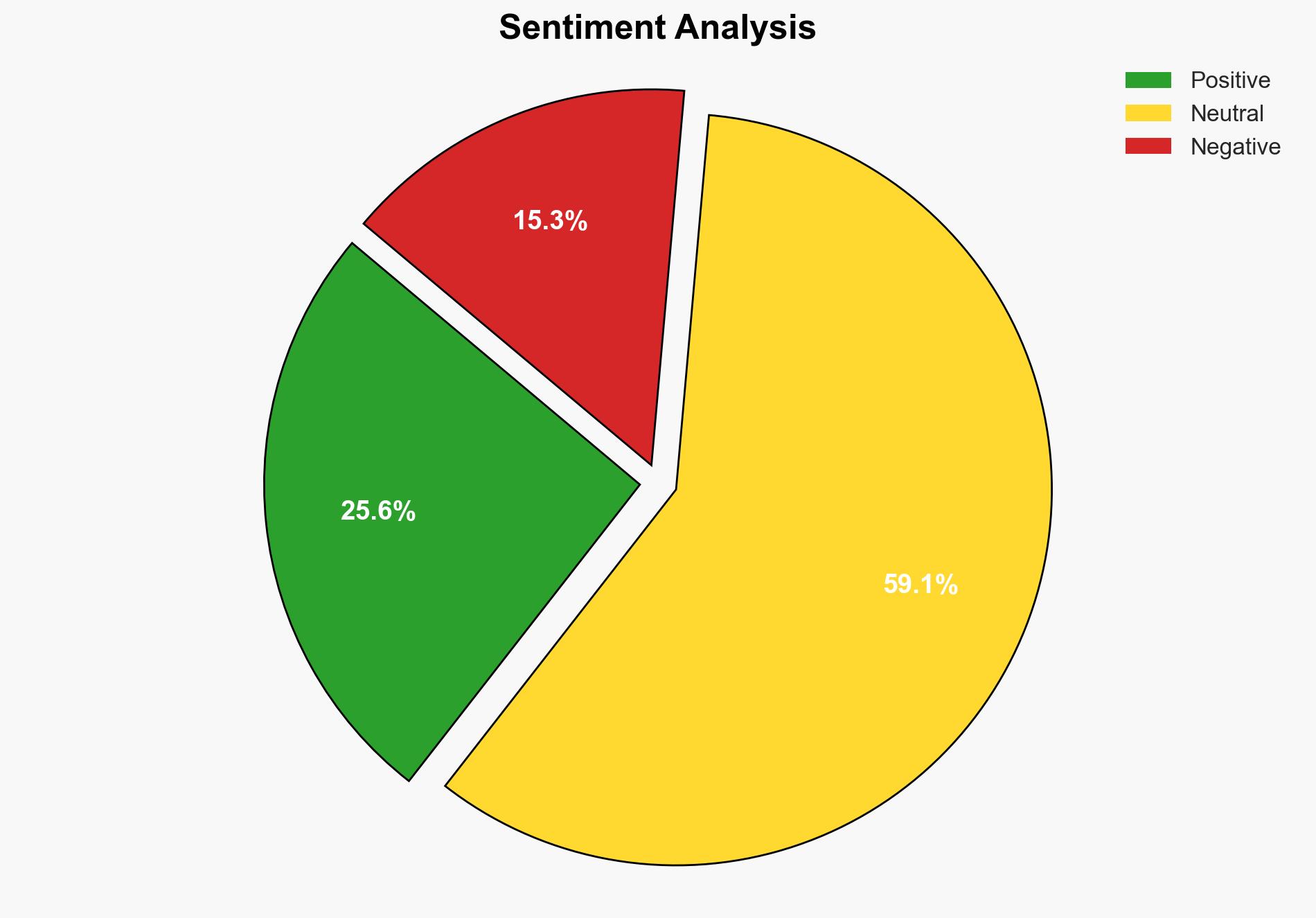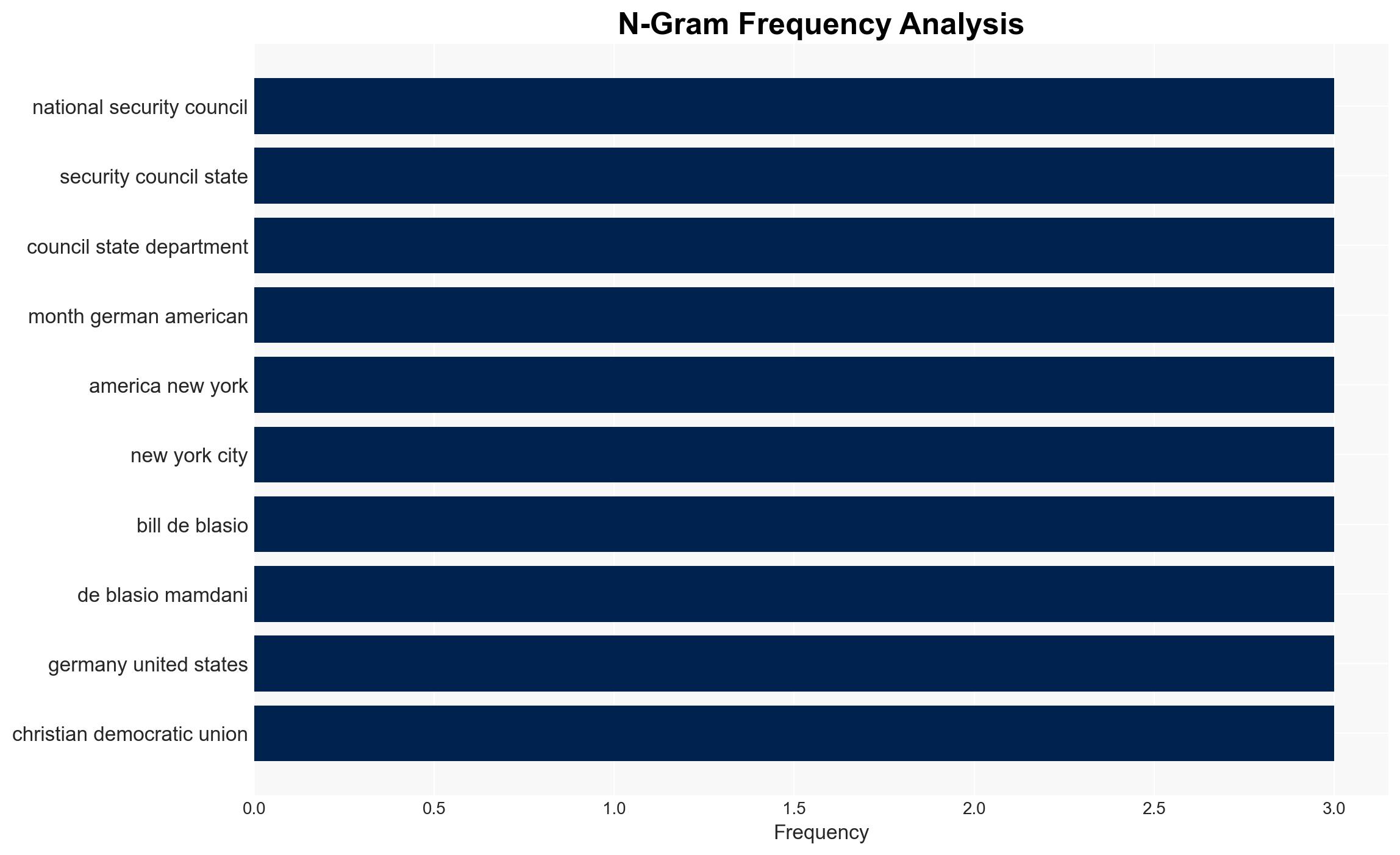She Fights Fascism in the Place Where Its Scariest Heres What She Has Learned – Slate Magazine
Published on: 2025-11-19
AI-powered OSINT brief from verified open sources. Automated NLP signal extraction with human verification. See our Methodology and Why WorldWideWatchers.
Intelligence Report:
1. BLUF (Bottom Line Up Front)
With moderate confidence, it is assessed that the rise of far-left movements in Germany, exemplified by Die Linke’s recent electoral success, poses both opportunities and challenges for countering far-right influences, such as the Alternative for Germany (AfD). Strategic engagement with youth and leveraging social media are critical to sustaining this momentum. Recommended actions include fostering transatlantic dialogue on countering extremism and supporting grassroots political education initiatives.
2. Competing Hypotheses
Hypothesis 1: Die Linke’s success represents a sustainable shift in German politics towards the left, driven by youth engagement and social media strategies.
Hypothesis 2: Die Linke’s success is a temporary anomaly, primarily due to specific electoral conditions and may not indicate a long-term trend.
Hypothesis 1 is more likely due to the consistent efforts to engage with younger demographics and address their concerns, as evidenced by Heidi Reichinnek’s approach. However, the volatile nature of political landscapes and historical precedence of fluctuating party successes suggest caution in assuming permanence.
3. Key Assumptions and Red Flags
Assumptions: It is assumed that youth engagement will continue to grow and that social media will remain an effective tool for political mobilization.
Red Flags: Potential over-reliance on social media could backfire if platforms change algorithms or if public sentiment shifts. Additionally, internal strife within leftist movements could undermine long-term success.
4. Implications and Strategic Risks
The rise of Die Linke could embolden other leftist movements across Europe and the United States, potentially leading to increased polarization. Conversely, failure to maintain momentum might strengthen far-right narratives. Cyber and informational threats could escalate as both sides leverage digital platforms for influence.
5. Recommendations and Outlook
- Encourage collaboration between leftist movements in Germany and the U.S. to share strategies and counter far-right narratives.
- Invest in political education programs to sustain youth engagement beyond social media.
- Best-case scenario: Sustained leftist influence leads to progressive policy changes and reduced far-right momentum.
- Worst-case scenario: Internal conflicts and external pressures cause Die Linke’s influence to wane, leading to a resurgence of far-right power.
- Most-likely scenario: Incremental gains by Die Linke, with ongoing challenges from both internal and external factors.
6. Key Individuals and Entities
Heidi Reichinnek, Die Linke; Alternative for Germany (AfD); Democratic Socialists of America (DSA); JD Vance; Paulina Luna; Marco Rubio.
7. Thematic Tags
Structured Analytic Techniques Applied
- Cognitive Bias Stress Test: Expose and correct potential biases in assessments through red-teaming and structured challenge.
- Bayesian Scenario Modeling: Use probabilistic forecasting for conflict trajectories or escalation likelihood.
- Network Influence Mapping: Map relationships between state and non-state actors for impact estimation.
Explore more:
National Security Threats Briefs ·
Daily Summary ·
Support us





